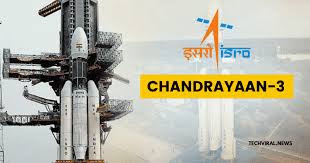
ISRO's Chandrayaan 3:
The next phase of India’s ambitious Moon mission — Chandrayaan-3, is scheduled for take-off by end of 2021, very much in the true spirit of the Indian Space Research Organization’s (ISRO) ever-progressive space endeavours. The engineering corrections to overcome all possible causes of hard landing experienced by Chandrayaan-2’s lander Vikram shall surely be the basis of re-design and building a fail-safe system. Chandrayaan-2’s ‘15 minutes of terrifying time’ shall be the main focus of technical work pertaining to Vikram-2 ofChandrayaan-3 mission.
ISRO has announced that the existing Orbiter module ofChanrayaan-2, which is already orbiting the Moon, shall be associated with the lander/Rover of Chandrayaan-3 to create a communication support Link. Thus, in the absence of its own orbiter, it is likely that after launch and on completion of the ‘sling-shot’ trajectory to reach Moon, Vikram-2 uses an independent Lander Module (LM). When in Lunar orbit, this Lander Module shall assist in launching the Lander (with a Rover) on to the lunar surface.
What is unique about Landing on Lunar Surface?
According to Milind Kulshreshtha, C4 expert, “During its interstellar course, a spacecraft takes various measurements and streams these down to the ground control for necessary navigation solutions. On the other hand, the ground control radios up a command sequence for various course corrections for the well-timed firing of small onboard attitude correction rockets, thereby, keeping the spacecraft on a pre-defined course. However, during landing on the lunar surface, once the Lander commences its descent, itis more or less in an autonomous navigation phase and is highly dependent on onboard sensors and instrumentation, and locally controls its liquid propulsion rockets.” “Once decoupled from the Orbiter, a Landercommences its Powered Descent Orbit Insertion stage and while travelling in one direction, finds it difficult to manoeuvre or turn, especially under the influence of lunar gravity. Thus, Lander has to mainly rely on the gravity for any trajectory change though some smaller amount of correction is achievable through the small attitude rockets onboard. The soft landing is achieved when the underside main thruster rocket provides the hovering over the landing spot and eases the lander on to the lunar surface,” he explains.As per ISRO’s designed feature of VikramLander, at an altitude of 30 km, an absolute navigation phase was designed to commence using measurements obtained from Ka-Band -1 altimeter, Laser Altimeter(LASA) and Land Position Detection Camera (LPDC). “The fine braking phase is mainly dependent on LASA inputs and during this Fine braking phase, the Landercraft is to be in a vertical seating position with the Lander position detection camera scanning the moon surface so as to commence the hovering phase with only two engines firing. LASA, Ka Band-2 altimeter and Lander Horizontalvelocity camera (LHVC) are highly active during this hovering. At 40mre-targeting phase occurs with a parabolic trajectory. Here, LASA, Ka Band-2, LHVC and Lander Hazard Detection and Avoidance Camera (LHDC) feed real-time inputs to the navigation computers onboard to guide the Lander towards a soft-touch down. In the terminal phase, at 10m altitude, the Central engine fires to achieve a soft touch down,” according to the C4 expert.
ISRO, in its true tradition, is most likely to take the complete Lander technology up by a few notches to create an advance lender, a more complex unit which is more in sync with its futuristic programmes like Gaganyaan mission of 2022. With Gagaanyan, India aims to be the fourth nation to launch a human space mission from its country and safely return the astronaut back to Earth. Further, ISRO plans to build a SpaceStation of its own. Keeping these activity timelines in mind, it may very well serve the cause that Vikram-2 of Chandrayaan-3 is a Lunar Lander with a decent stage and also, an ascent stage to launch itself back to Earth using the LanderModule (leaving the descent stage on Moon surface). “It may be exciting to imagine that this ascent stage returns back to Earth (with moon sample), while also assist in testing the crucial technology of space manoeuvring, undocking/docking in space and enhances the expertise on re-entry into Earth’s atmosphere,” says Kulshreshtha.
----------------------------------------------------------------
Contact Us for any query
More....
CATEGORY
Science
CATEGORY
Shooting Stars
CATEGORY
Tecnology
Flying car races are no longer just reserved for computer games and science fiction movies, now they are hitting the real world !
Learn More
CATEGORY
science
CATEGORY
Shooting Stars
CATEGORY
Space
CATEGORY
Science
CATEGORY
Environment
